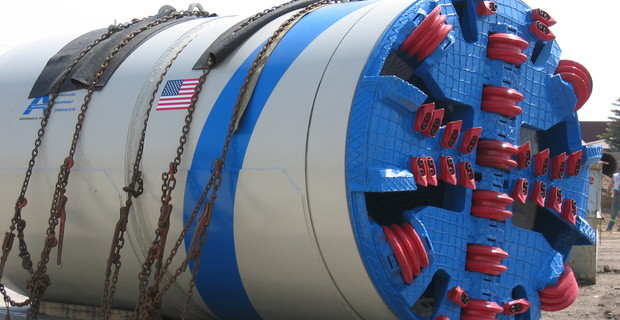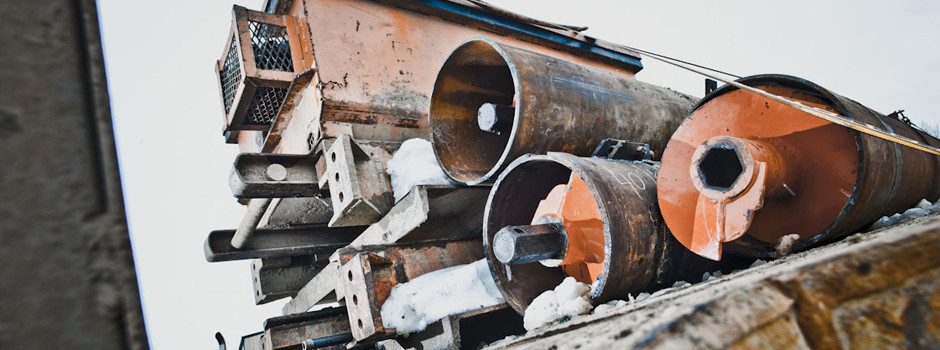
METHOD DESCRIPTION
Microtunneling (MT) is a trenchless technology method for installing pipe from a drive shaft to a receiving shaft employing hydraulic jacks to force pipe through the ground via pipe-to-pipe interaction as the jacking face is excavated mechanically with a microtunnel boring machine (MTBM). The MTMB is a remotely-controlled steerable rotating cutting head that excavates material at the face of the pipe jack. The spoil is removed at the face of excavation via the slurry method, which is mixed in the slurry chamber behind the head and pumped to the surface into a separation system and then recycled to be used again. A laser is used to determine a fixed point of reference for line and grade and transmitted to a monitor. All operator controls are located at the surface in a control box with visible access to the drive shaft for contact with all workers. Using this method, utilities can be installed with very high accuracy or long distances and in challenging soil conditions where other systems would have difficulty performing. Neptune Coring was the first contractor in Western Canada to employ this trenchless technology.
TYPICAL AREAS OF INSTALLATION: Deep Installations, Unsuitable Soil Conditions, Installations where space is limited
MAIN APPLICATION: Graded Sanitary & Storm Sewers – Gravity Pipes, Deep Installations
PIPE MATERIALS: A wide range of pipe materials; concrete, steel, vitrified clay tile, polymer mortar, fiberglass/resin based.
SOIL CONDITIONS: MTBM are capable of tunneling through a wide range of soil conditions, this is possible due to the wide selection of cutting heads available. Cutter heads are chosen specifically for the soil conditions it will encounter on a per project basis.
DIAMETER RANGE: MT can be used to install pipe diameters from 300mm (12”) – 2400mm (95”).
DRIVE LENGTH: Installation can be achieved up to 300m (984’).
ACCURACY: MT is capable of highly precise gravity flow installations to +/- 25mm (1”) of design.
